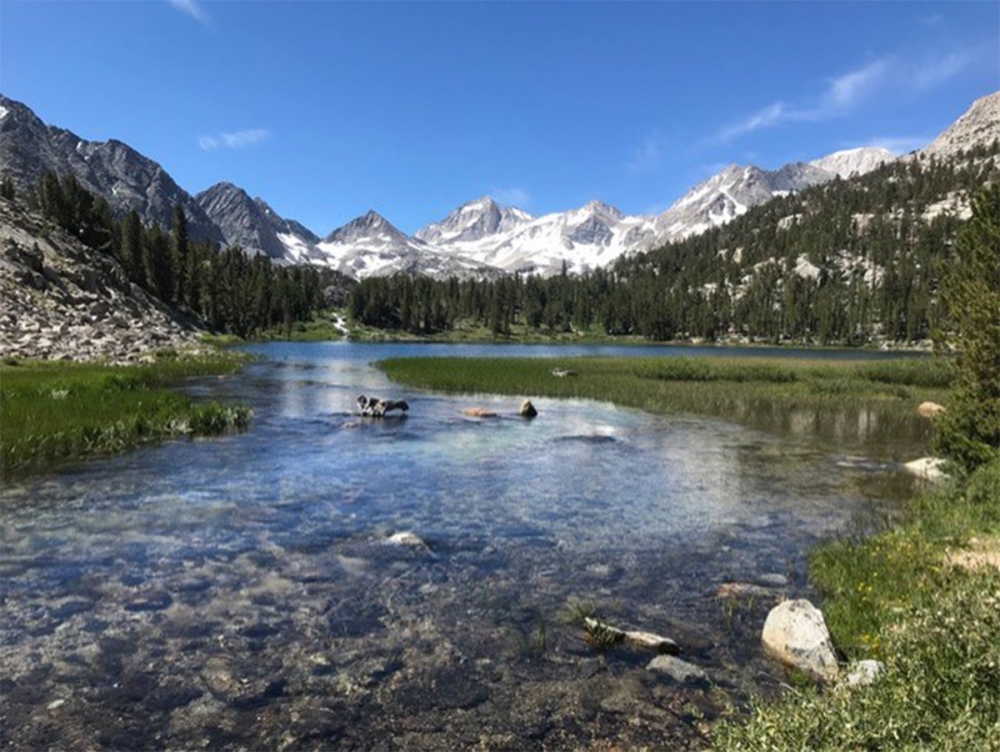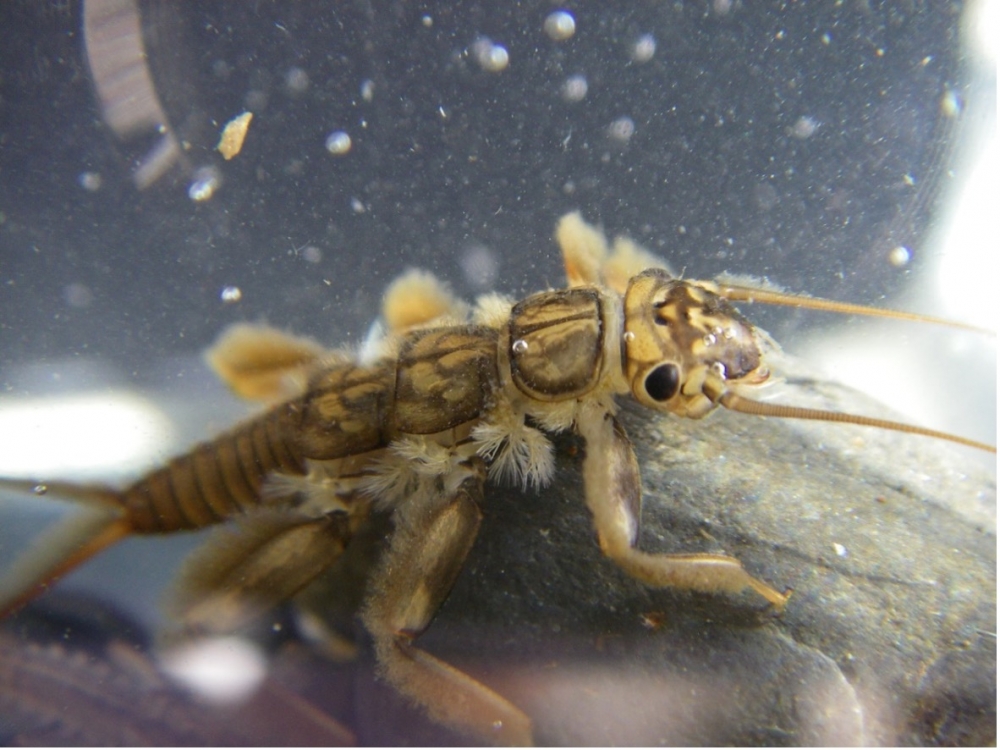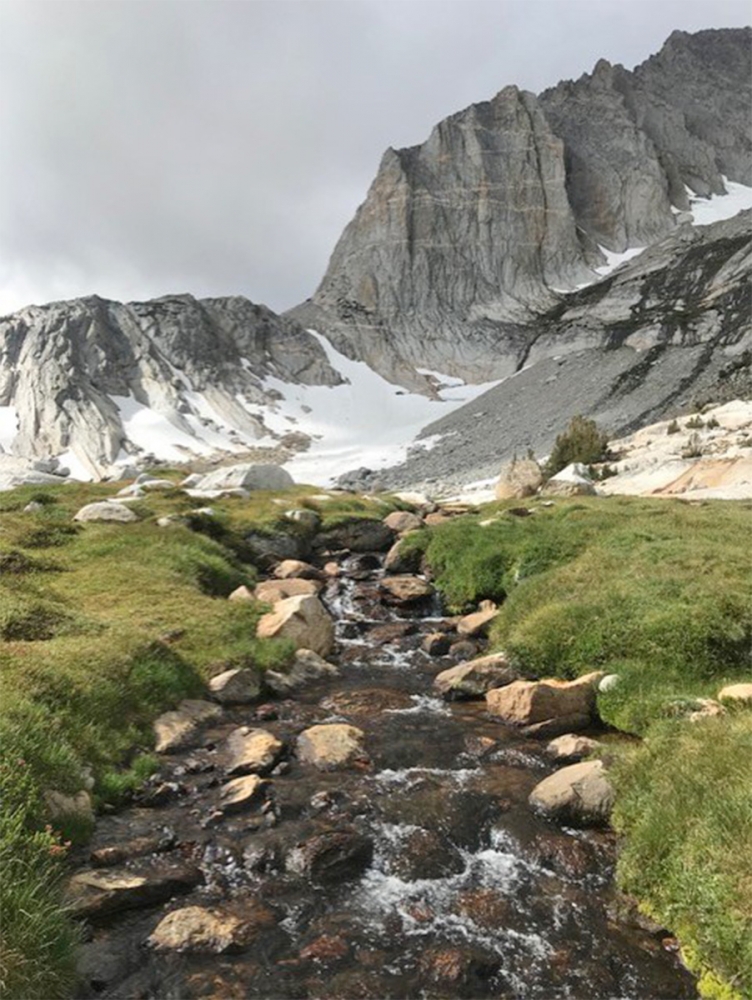Inside Stream Ecosystems
Streams hide an underwater world of tiny insects in a fantastically varied web of life. Though largely hidden from human view by rushing waters, these aquatic communities are every bit as complex as anything on dry land.
Why species are found where within streams, however, remains rather mysterious. Many theories have sought to explain biodiversity patterns within ecosystems in general, and river networks in particular. But findings have been limited to specific types of rivers, such as those flowing through forests. The overarching processes driving stream ecosystem organization — knowledge critical to guide biodiversity conservation efforts — haven’t been fully understood.
Now, a team including UC Santa Barbara research biologist David Herbst, and based at the university’s Sierra Nevada Aquatic Research Laboratory (SNARL) in Mammoth Lakes, has detailed new insights in the journal Ecological Monographs. They report finding several distinct patterns of diversity common to their stream and lake networks that, taken together, point toward several mechanisms that both foster diversity and sort species across aquatic environments.
Building on previous work by Herbst, graduate student Matthew Green, of UC Riverside, and colleagues examined the aquatic invertebrates living along networks of streams and lakes in the high alpine zone of the Sierra Nevada. Many of these organisms are larval forms of insects such as stoneflies and caddisflies.
“We wanted to understand how much the environment is helping to sort organisms within a particular network,” Green said.
The new study’s roots date back about fifteen years, when Herbst surveyed aquatic invertebrates in two Sequoia-Kings Canyon National Park stream-lake networks for the National Park Service. Realizing that the existing dataset would be an ideal foundation upon which to build, Green expanded it with his own stream diversity surveys, for a grand total of five networks and a whopping 118 sites sampled. He also collected information about stream characteristics at each of his sampling sites, including data on water temperature, dissolved oxygen levels, flow rate and type of bottom substrate.
Mighty headwaters
One of the team’s major findings was that headwaters differed the most from each other in terms of species types. An existing theory called the “small but mighty headwaters hypothesis” suggested this result.
At high elevations, headwaters tend to arise in basins separated from other waterways by steep, rocky ridges. These ridges form barriers to adult insects seeking to colonize new streams to find and lay their eggs. As they say in real estate, ‘location, location, location.’
“Because those small streams are fairly isolated from one another, the expectation is that would lead to localized differences,” said Herbst. “Animals are not able to migrate between them and homogenize the community.”
Furthermore, unlike the middle reaches of streams, headwaters are unable to be colonized by species drifting downstream with the current.
River continuum
The scientists also found that local diversity increased downstream from a waterway’s headwaters. In other words, they found a greater variety of animals farther away from the stream’s origins.
This result supports the “river continuum concept,” which theorizes that physical changes in a stream’s characteristics as it shifts from a headwaters tributary to a mainstem river enable it to support the most diversity in its middle reaches.
The Sierra stream sites with warmer waters and more productivity also supported the most species. The alpine location of the study, where algae growing on stream rocks is what fuels the invertebrate community, surely enhanced this result, the scientists said. In forest streams, where nutrient inputs were more abundant from tree leaves falling into streams, the gradient might not be so obvious.
Chutes and ladders
The exception to that finding was at the outlets of lakes. These sites, where broad lake banks constrict back into streams, harbored the fewest species of all.
According to the researchers, that’s likely because moving from a placid lake to a flowing stream constitutes a dramatic shift in environmental conditions. The plankton drifting in lake waters gets swept up in the stream current. Insects like blackflies and net-spinning caddisflies can take advantage of the firehose of food at lake outlets, enabling these filter feeders to form dense populations and muscle out most other types of species.
Herbst likens this to the board game Chutes and Ladders. Just as players in the game climb ladders to get to the finish line, streams build diversity as they go. But, he says, “as you hit these lake systems, the diversity basically has to restart further downstream” — akin to the chutes that send game players back toward the start. It takes both distance and time for conditions to favor a wider range of species again.
Documenting diversity
The data collected in this study will help to further scientific understanding of what species rear in alpine streams. At present, reliable keys do not exist for the immature stages of many species. Even experienced Sierra stream scientists like Herbst can identify their specimens to species only about 30% of the time.
“We’re finding out what lives in areas under the water’s surface where most people don’t look, and filling in some data gaps for basically unknown organisms as well,” Herbst said.
Perhaps even more important is the snapshot of stream conditions the samples provide, especially in a period of rapid climate change. “They allow people to go back to them and ask, have we lost species or have their distributions changed?” Herbst said.
Having such references can help conservationists keep tabs on mountain stream health, and ensure the biological diversity of California — including the littlest animals in the smallest streams — endures into the future.
A base in eastern California
Field operations for this project were run out of SNARL, one of seven UC Santa Barbara-administered sites that are part of the 39-site UC Natural Reserve System (NRS).
“Having access to the reserves is really huge for research like this, for being in close proximity to field sites and having a scientific community to bounce ideas off of,” Green said. “They have so much knowledge of the region. They were really helpful in saying maybe don’t do a 15 mile hike each day to go collect bugs, and maybe have a few sites that are more manageable.”
The researchers also used the reserve’s laboratory facilities to analyze their specimens. Green consulted with Herbst to get help identifying many specimens. But even Herbst, who has decades of Sierra stream research behind him, hasn’t seen all the stream insects out there.
“Other than microbes, aquatic invertebrates are far and away the most diverse life we find in the streams,” he said. “They represent thousands of species that, by and large, are uncatalogued.”
The NRS supported this project over several years. A Mildred E. Mathias Graduate Research Grant and Valentine Eastern Sierra Reserve Graduate Research Grant helped with transportation and general supplies, plus reserve accommodations and lab use. A fellowship with the Institute for the Study of the Ecological Effects of Climate Impacts (ISEECI), which encouraged graduate students to document and analyze climate shifts at NRS reserves, enabled Green to purchase much of his field equipment.
Kurt E. Anderson and Marko J. Spasojevic, both of UC Riverside, also contributed to this research.






